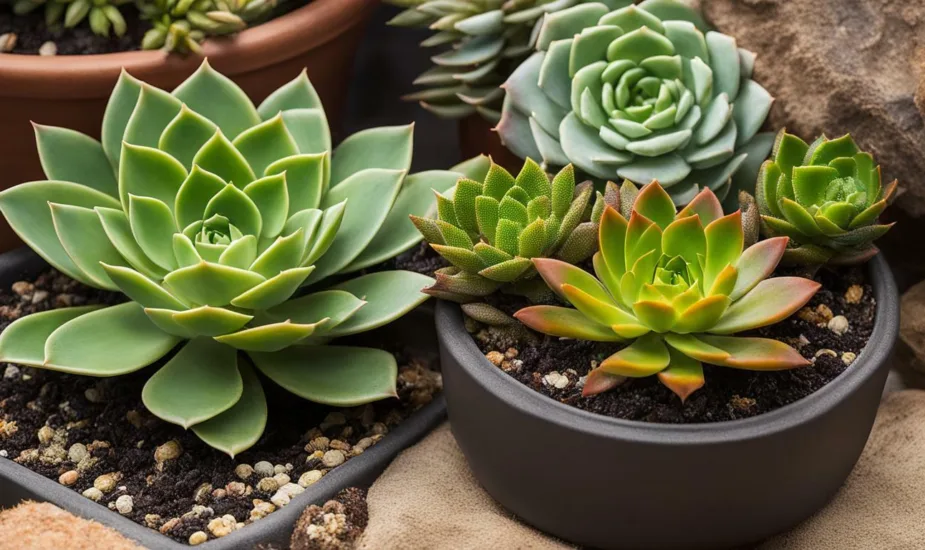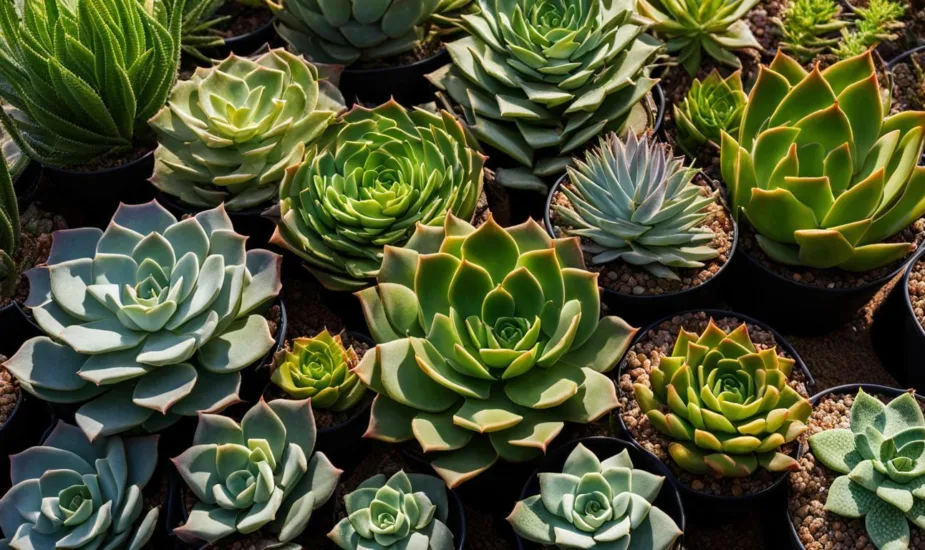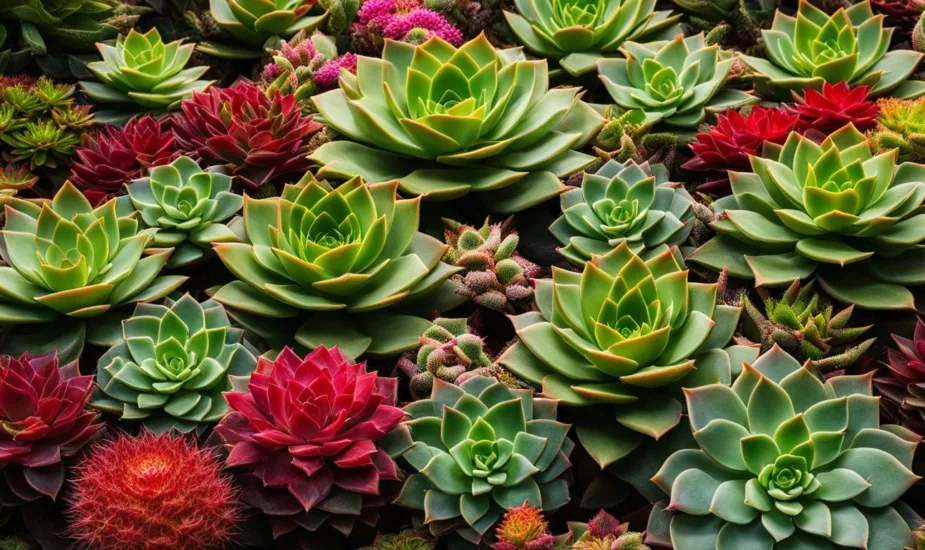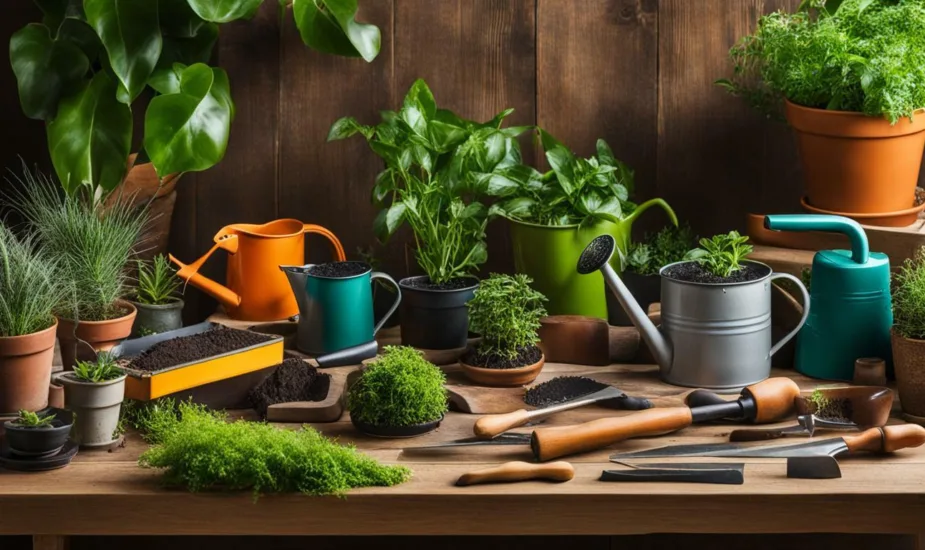Tips for Growing Chrysanthemums in Pots

As a professional copywriting journalist and avid gardener, I know the importance of container gardening when it comes to growing chrysanthemums. Not only does it provide versatility, but it also allows you to grow these beautiful blooms in small spaces or on balconies and patios. In this article, I’ll share my tips and techniques for successfully growing chrysanthemums in pots.
Key Takeaways:
- Growing chrysanthemums in pots provides versatility and allows for small space gardening.
- Choosing the right pots, soil, and location is crucial for successful chrysanthemum growth.
- Proper watering, fertilization, and pruning techniques are essential for healthy and abundant blooms.
Choosing the Right Pots for Chrysanthemums
When it comes to growing chrysanthemums in containers, selecting the right pot is crucial for their success. Here are some tips to ensure you choose the best pot for your potted chrysanthemums:
- Size: The pot size should match the size of the plant. Chrysanthemums have shallow root systems, so a pot that is 6-8 inches deep and wide is suitable for most varieties.
- Material: Choose a pot made of a porous material such as clay or terracotta. This allows for proper drainage and aeration, preventing the roots from becoming waterlogged. Plastic pots can also be used but ensure they have sufficient drainage holes to prevent water buildup.
- Drainage: Speaking of drainage, it’s crucial to have adequate drainage holes in the bottom of the pot to prevent the roots from rotting. Additionally, consider placing a layer of rocks or gravel at the bottom of the pot to aid in drainage.
The right potting mix is also important for growing chrysanthemums in containers. Use a well-draining soil mix, such as a combination of peat moss, perlite, and vermiculite. Avoid garden soil as it’s too dense and can hinder drainage.

Selecting the Best Chrysanthemum Varieties for Pots
When selecting chrysanthemums to grow in containers, it is important to choose varieties that are well-suited for the environment. Compact and hardy plants are ideal, with strong stems and abundant blooms that are not too large or heavy for the container. Here are some of my top picks for chrysanthemums that are perfect for container gardening:
| Variety | Description |
|---|---|
| ‘Apricot Alexis’ | This variety produces small, apricot-colored blooms that are perfect for containers. It grows to a height of 12-18 inches and has a long blooming period. |
| ‘Coral Charm’ | A popular choice for container gardening, ‘Coral Charm’ produces large, coral-pink blooms that are sure to make a statement. It grows to a height of 24-36 inches and has a mid-season bloom time. |
| ‘Giggles’ | This compact variety produces masses of cheerful, yellow blooms that are perfect for accenting fall décor. It grows to a height of 12-16 inches and has a long blooming period. |
| ‘Grandchild’ | A charming variety that produces small, pompon-like blooms in shades of pink and yellow. It grows to a height of 18-24 inches and has a mid-season bloom time. |
| ‘Sheffield Pink’ | One of the hardiest chrysanthemums, ‘Sheffield Pink’ produces large, pink blooms that are perfect for cut arrangements. It grows to a height of 24-30 inches and has a late-season bloom time. |
When selecting chrysanthemums for your container garden, be sure to choose varieties that fit the size and style of your containers, as well as the overall aesthetic of your garden. With the right varieties, container gardening with chrysanthemums can be a beautiful and rewarding experience.

Providing the Right Growing Conditions
When it comes to growing chrysanthemums in pots, providing the right growing conditions is critical to the success of your plants. Here are some key factors to keep in mind:
| Factor | Requirements |
|---|---|
| Sunlight | Chrysanthemums require at least six hours of direct sunlight per day. Choose a sunny location for your pots, such as a south-facing patio, balcony, or windowsill. |
| Soil | Chrysanthemums prefer well-draining soil that is rich in organic matter. Use a high-quality potting mix and avoid soil that is too heavy or compacted. |
| Watering | Keep the soil consistently moist but not waterlogged. Water the plants deeply when the top inch of soil feels dry to the touch. |
| Fertilization | Chrysanthemums benefit from regular fertilization during the growing season. Use a balanced fertilizer and apply according to package instructions. |
By providing the right growing conditions, you can ensure that your potted chrysanthemums will grow strong and healthy, producing an abundance of beautiful blooms.
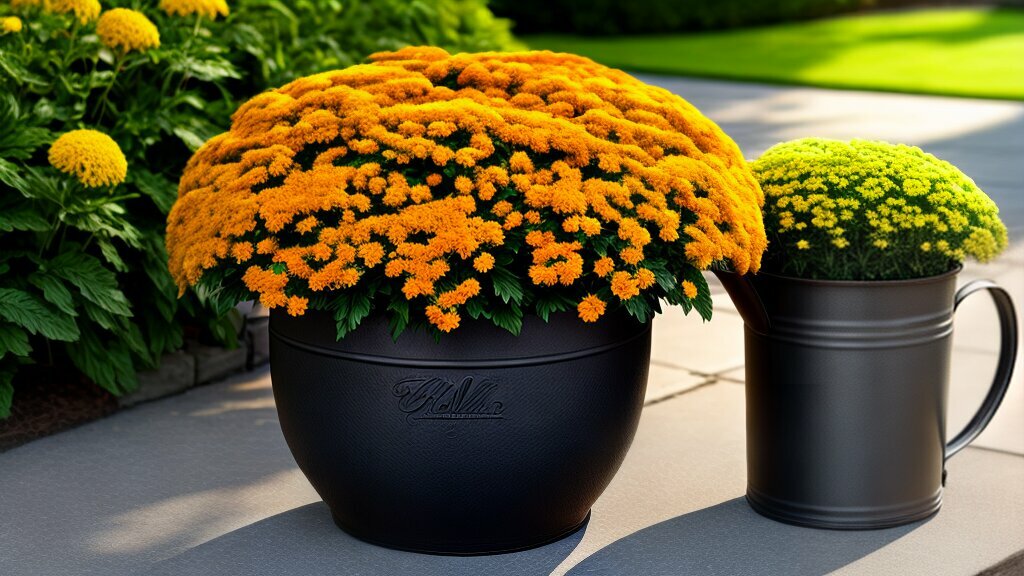
Planting and Transplanting Chrysanthemums in Pots
Now that you have chosen the right container and the best chrysanthemum variety for your potted garden, it’s time to plant and transplant your mums. Here are the step-by-step instructions:
- Fill your pot with a well-draining potting mix, leaving about 2 inches of space below the rim.
- Dig a hole in the center of the pot, large enough to accommodate the root ball of your chrysanthemum.
- Carefully remove the chrysanthemum from its original container, gently tease out the roots, and lower the plant into the hole.
- Backfill the hole with soil, firming it gently around the plant’s stem.
- Water the newly planted chrysanthemum thoroughly, until water runs out of the drainage holes.
If you are transplanting an existing chrysanthemum from the ground into a pot, follow these additional steps:
- Dig up the chrysanthemum, making sure to retain as much of the root ball as possible.
- Trim any damaged or diseased roots, and prune back the plant by one-third to one-half of its height.
- Prepare a potting mix and pot that are one size larger than the plant’s previous container.
- Place a layer of fresh potting mix in the bottom of the new pot.
- Position the chrysanthemum in the center of the pot, at the same soil level it was growing in its previous container or in the ground.
- Backfill with fresh potting mix, firming it gently around the plant’s stem.
- Water the newly transplanted chrysanthemum thoroughly.
Remember to provide your potted chrysanthemums with proper care and attention after planting or transplanting them. Keep the soil evenly moist and provide adequate sunlight, and your chrysanthemums will thrive in their new container home.

Pruning and Pinching Techniques for Potted Chrysanthemums
Creating a bushier and fuller chrysanthemum plant is possible with the correct pruning and pinching techniques. There are two different types of pruning: regular pinching and disbudding. Regular pinching is done by removing the top 1-2 inches of new growth on each stem, which encourages the plant to produce more lateral stems and grow bushier. Disbudding involves removing the side buds that grow along the main stem, leaving only the central bud to grow into a large, showy flower.
For the best results, start pinching when your chrysanthemum plants have grown 5-6 inches tall. Continue pinching every two weeks until mid-July. If you want fewer but larger flowers, you may opt to disbud your plants.
When pinching or disbudding, use a sharp, clean pair of scissors to make precise cuts without damaging the plant. Cut just above the node where a new stem or bud is about to grow.
Note: Be sure not to pinch or disbud your chrysanthemum plants after mid-July, as this could prevent flower buds from forming on time.

Pruning can be beneficial for chrysanthemums that have become leggy, as it promotes lateral growth and a fuller, more attractive plant. Pinching and disbudding can also help extend the blooming period of your chrysanthemums, resulting in more flowers to enjoy throughout the season.
Protecting Chrysanthemums from Pests and Diseases
When growing chrysanthemums in pots, it is important to protect them from various pests and diseases that can damage or kill the plants.
Common pests to watch out for include:
| Pest | Symptoms | Treatment |
|---|---|---|
| Aphids | Leaves become distorted and yellow | Spray with insecticidal soap or use a natural solution such as neem oil |
| Spider Mites | Leaves turn yellow and develop fine webbing | Wash affected areas with a strong jet of water or use a miticide |
| Caterpillars | Leaves have large holes or are eaten through | Remove by hand or use a natural solution such as Bacillus thuringiensis |
Common diseases include:
| Disease | Symptoms | Treatment |
|---|---|---|
| Powdery Mildew | White powdery coating on leaves and stems | Apply fungicide or use a natural solution such as a mixture of baking soda and water |
| Botrytis Blight | Brown spots on petals and leaves, fuzzy gray mold on flowers | Remove affected leaves and flowers, improve air circulation, and apply fungicide |
| Verticillium Wilt | Leaves wilt and turn yellow, eventually dying | Remove infected plants and avoid planting chrysanthemums in the same location for several years |
To prevent these issues, it is important to maintain good plant health through proper watering and fertilization practices. Additionally, inspect your chrysanthemums regularly for signs of pests or disease and promptly treat any issues you discover.

Overwintering Chrysanthemums in Containers
Overwintering chrysanthemums in containers requires some preparation to ensure their survival and readiness for the following year. The first step is to choose a suitable location that offers protection from frost and strong winds. A garage, basement, or cool room with temperatures between 30 and 50 degrees Fahrenheit is ideal.
Before storing your chrysanthemums, it is important to prune them to a height of 6 to 8 inches to encourage bushier growth next season. Remove any dead or damaged leaves and blooms, and cut back the stems to just above the soil level. Be sure to use sterile pruning tools to prevent the spread of disease.
Once your chrysanthemums are pruned, you can either leave them in their current containers or transfer them to smaller pots with fresh potting soil. Water the plants thoroughly, but avoid soaking the soil, as too much moisture can lead to root rot.
Next, cover the plants with a layer of mulch or straw to help insulate them from the cold. This will also help retain moisture and prevent the soil from drying out. Finally, place your containers in their designated storage location and check on them periodically throughout the winter months, watering as needed to keep the soil slightly moist.
When spring arrives, you can gradually acclimate your chrysanthemums back to outdoor conditions by moving them to a sunny, sheltered area for a few hours each day. Increase the amount of time they spend outside each day until they are ready for planting in their permanent location.

Troubleshooting Common Issues with Potted Chrysanthemums
As a chrysanthemum grower, I know how frustrating it can be when your plants exhibit problems. Here are some common issues that you may encounter and tips on how to address them:
Wilting
If your chrysanthemums are wilting, it could be due to underwatering, overwatering, or root rot. Check the soil moisture level regularly and adjust your watering schedule accordingly. Also, ensure that your pots have adequate drainage to prevent water from sitting in the soil. If root rot is the issue, you may need to repot your plants into fresh soil and trim any affected roots.
Yellowing Leaves
Yellowing leaves on chrysanthemums can be caused by a variety of factors, including nutrient deficiencies, pests, and diseases. Check your plant for signs of insect infestations or fungal growth. Provide your plants with high-quality fertilizer, ensuring to follow the instructions properly.
Lack of Blooms
If your chrysanthemums are not producing blooms, it could be due to insufficient sunlight, lack of nutrients, or improper pinching. Ensure that your plants receive at least six hours of direct sunlight daily. Also, provide them with adequate fertilization and proper pinching techniques to promote bushier growth and more buds.
Conclusion:
By identifying and addressing these common issues, you can keep your potted chrysanthemums healthy and thriving. Don’t be afraid to experiment with different care techniques to find what works best for your plants.
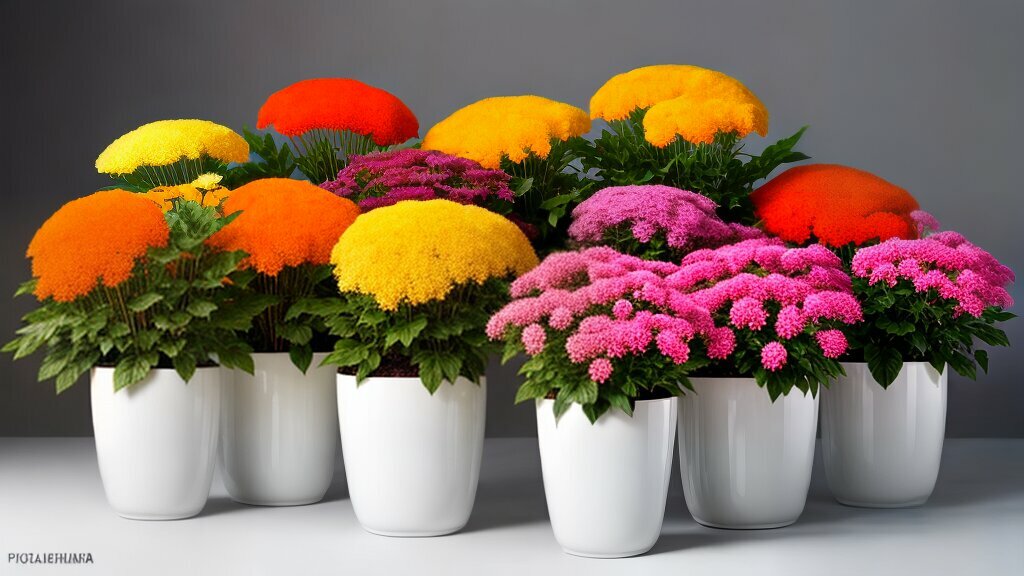
Tips for Displaying Potted Chrysanthemums
Chrysanthemums are not only beautiful, but also incredibly versatile when it comes to container gardening. You can display them in a variety of ways, from simple and elegant to bold and creative. Here are some tips for showcasing your potted chrysanthemums:
- Group pots of different colors and varieties together for a stunning display.
- Choose decorative containers that complement your home’s décor or add a pop of color to your outdoor space.
- Arrange chrysanthemum pots on steps or stairs in varying heights for added visual interest.
- Create a focal point by placing a large pot of chrysanthemums in the center of a patio or garden area.
- Hang pots of trailing varieties of chrysanthemums from railings or shepherd’s hooks for a unique look.
Remember to keep your chrysanthemums well-watered and fertilized for optimal growth and bloom. With these tips, you can enjoy a beautiful display of potted chrysanthemums in your home or garden!
Tips for Extending the Bloom Period of Chrysanthemums in Pots
If you want to enjoy the vibrant colors and beautiful blooms of chrysanthemums in pots for as long as possible, there are several techniques you can apply to extend their blooming period. Let’s take a look at some of the most effective tips:
Deadhead Regularly
Deadheading is the practice of removing spent flowers from the plant. This encourages the chrysanthemum to produce new blooms instead of wasting energy on producing seeds. Be sure to deadhead regularly by cutting off the old flowers just above the first set of leaves. This will stimulate new growth and help prolong the blooming period.
Provide Adequate Water and Fertilizer
Chrysanthemums in pots need regular watering and fertilization to thrive and produce abundant blooms. Be sure to water them deeply and regularly to prevent the soil from drying out, especially during hot and dry weather. You can also fertilize them with a balanced liquid fertilizer once every two weeks during the growing season to promote healthy growth and flowering.
Pinch Back Young Plants
Pinching back is the practice of removing the top part of the plant when it’s still young to encourage bushier growth and more flowers. This is especially beneficial for chrysanthemums in pots, as it helps them produce more blooms over a longer period of time. Pinch back the top ½ inch of growth when the plants are about 6 inches tall, and repeat the process every few weeks until mid-summer.
Protect from Frost
Chrysanthemums are sensitive to frost and can be damaged or killed by it. To protect your potted chrysanthemums from frost, bring them indoors or move them to a sheltered area when the temperature drops below freezing. You can also cover them with a frost cloth or blanket to provide additional protection.
Choose Long-Lasting Varieties
When selecting chrysanthemum varieties for your pots, choose ones that are known for their long blooming period, such as ‘Sheffield Pink’ or ‘Mary Stoker’. These varieties will provide you with weeks of beautiful blooms, extending the blooming period and allowing you to enjoy them for longer.

By following these tips, you can extend the blooming period of your potted chrysanthemums and enjoy their vibrant colors and beauty for as long as possible. Happy gardening!
Tips for Growing Chrysanthemums in Pots
Chrysanthemums are a popular flowering plant that can brighten up any garden or outdoor space. Growing them in pots offers a great way to showcase their vibrant colors and versatile blooms. In this article, I have provided a comprehensive guide to growing chrysanthemums in containers, covering everything from selecting the right pots and varieties to providing the right growing conditions and care.
The Benefits of Container Gardening
Container gardening is a great option for growing chrysanthemums, as it provides flexibility and versatility in terms of placement and design. Potted chrysanthemums can be used to decorate patios, balconies, and other outdoor spaces, or as centerpiece plants in garden beds. Additionally, growing chrysanthemums in pots allows for better control over their growing conditions, including soil type, drainage, and sunlight exposure.
Final Thoughts
Growing chrysanthemums in pots is a rewarding experience that can yield beautiful results with a little effort and care. By following the tips and techniques outlined in this article, you can achieve healthy, vibrant plants with abundant blooms. Remember to select the right pots, choose suitable varieties, and provide the necessary growing conditions and care. With proper attention, you can enjoy the beauty of chrysanthemums in your container garden for years to come.
FAQ
Q: Can I grow chrysanthemums in pots?
A: Yes, chrysanthemums can be successfully grown in pots, making them a versatile choice for container gardening.
Q: What pots should I choose for growing chrysanthemums?
A: When selecting pots for chrysanthemums, choose containers that are the right size, made of suitable materials, and have proper drainage.
Q: Which chrysanthemum varieties are best for pots?
A: Opt for compact varieties with strong stems and abundant blooms that are well-suited for container gardening.
Q: What are the key growing conditions for chrysanthemums in pots?
A: Chrysanthemums in pots require adequate sunlight, well-draining soil, appropriate watering, and regular fertilization.
Q: How do I plant and transplant chrysanthemums in pots?
A: Follow step-by-step planting and transplantation instructions, including proper technique and care after transplantation.
Q: What pruning and pinching techniques should I use for potted chrysanthemums?
A: Pruning and pinching chrysanthemums promote bushier growth and more flowers. Learn specific techniques and timing.
Q: How can I protect chrysanthemums in pots from pests and diseases?
A: Identify common pests and diseases, prevent problems, and use organic solutions for pest control.
Q: How do I overwinter chrysanthemums in containers?
A: Ensure the survival of your chrysanthemums by protecting them from frost, pruning, and proper storage during winter.
Q: What do I do if I encounter issues with potted chrysanthemums?
A: Troubleshoot common issues, such as wilting, yellowing leaves, and lack of blooms, with helpful tips and solutions.
Q: Any tips for displaying potted chrysanthemums?
A: Get creative with ideas for displaying chrysanthemums in your garden or on patios and balconies using different colors and decorative containers.
Q: How can I extend the bloom period of chrysanthemums in pots?
A: Learn techniques like deadheading and fertilization that can help prolong the flowering season of your chrysanthemums.
 Little Garden Tips
Little Garden Tips






